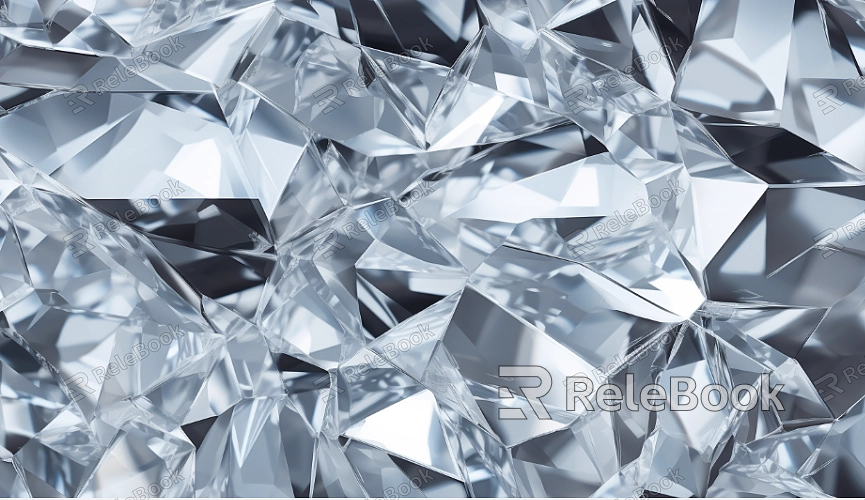How to Apply HDR Lighting to Diamond Textures in 3ds Max?
In real-world scenarios, diamonds are commonly used in jewelry design, advertising, and film production. To accurately capture the true essence of diamonds under various lighting conditions, HDR lighting is an invaluable tool. It enhances the detail and dynamic range, preventing visual loss due to insufficient lighting or overexposure. While 3ds Max is a popular choice for this process, other 3D software like Blender, Cinema 4D, and Maya also extensively use HDR lighting to boost material realism. This guide will walk you through the steps to apply HDR lighting to diamond textures in 3ds Max, helping you elevate the overall quality and visual impact of your work.

1. Selecting the Appropriate HDR Image
Understanding the Role of HDR Images:
HDR (High Dynamic Range) images capture a broader range of light information, from the darkest to the brightest areas. These images are typically created by combining multiple photos with different exposure levels, making them ideal for simulating the complex lighting conditions found in nature.
Choosing an HDR Image that Matches the Scene:
Select an HDR image that complements the environment in which your diamond texture is placed. For instance, if your diamond is showcased under sunlight, opt for a sunny outdoor HDR image. For an indoor setting, choose an HDR image that reflects indoor lighting conditions.
2. Importing the HDR Image into 3ds Max
Setting Up the Environment Map:
In 3ds Max, open the “Environment and Effects” window by pressing the "8" key. In the environment map, select "Bitmap" and import your HDR image.
Adjusting the Mapping Type:
Set the mapping type to "Spherical Environment" to ensure the HDR image evenly covers the entire scene, providing 360-degree lighting for the diamond.
3. Configuring the V-Ray Renderer
Selecting the Appropriate Renderer:
If you’re using the V-Ray renderer, make sure to select V-Ray as the primary renderer in the "Render Setup" window. V-Ray handles HDR images more effectively and offers additional lighting and reflection options.
Adjusting the V-Ray Dome Light:
Add a V-Ray Dome Light and link the HDR image to its map channel. This setup can simulate global illumination, ensuring the diamond reflects the light sources in the HDR image from all angles.

4. Optimizing the Diamond Material
Setting Up a High-Reflectivity Material:
In the Material Editor, choose a V-Ray material for the diamond and set its reflectivity close to 100%. Additionally, adjust the Index of Refraction (IOR) to around 2.4, which is the actual IOR for diamonds, allowing light to refract intricately within the diamond.
Adding Glossiness and Blurred Reflections:
By tweaking the reflection glossiness, you can create a surface that features both sharp reflections and subtle blur, mimicking the optical properties of a real diamond.
5. Adjusting Exposure and Color Balance
Exposure Control:
In the "Render Setup" window, use V-Ray's exposure control to fine-tune the exposure levels, ensuring that the diamond’s details aren’t lost due to overly intense lighting.
Color Balance Adjustment:
Through V-Ray’s Color Mapping options, adjust the tones to avoid oversaturation while maintaining the diamond's color variations under different lighting conditions.
6. Rendering and Post-Processing
Test Renders:
Before committing to the final render, perform multiple test renders to fine-tune the lighting, reflections, and refraction, ensuring the diamond looks as expected under HDR lighting.
Post-Processing:
After rendering, use Photoshop or another image-editing software to further adjust the brightness, contrast, and color tones, making the diamond stand out in the final image.
By following these steps, you can successfully apply HDR lighting to diamond textures in 3ds Max, resulting in a more lifelike and vibrant visual presentation. This process requires not only a solid understanding of HDR images but also careful adjustments to material settings and lighting configurations to achieve the best possible outcome. If you're seeking high-quality HDR images, 3D textures, SketchUp models, or 3ds Max models for your projects, Relebook offers a wide range of resources to help you achieve outstanding visual effects in your work.

